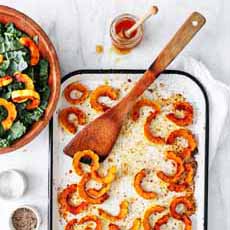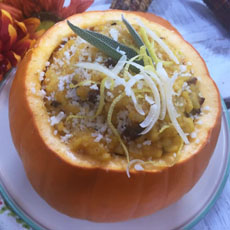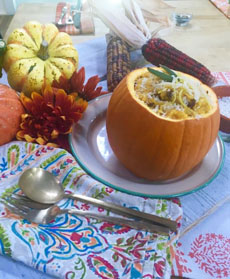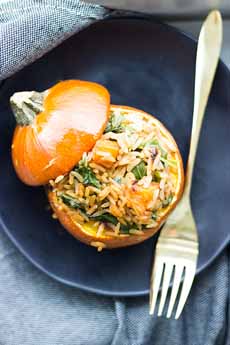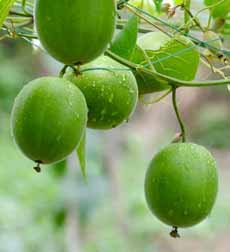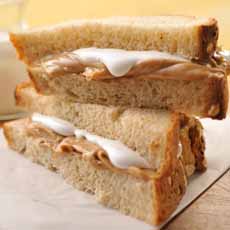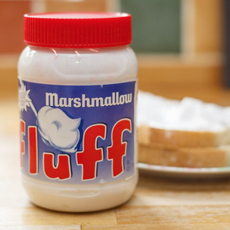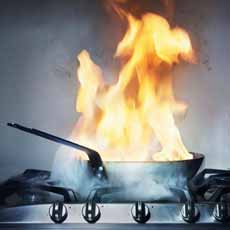|
We get some of our favorite inspirational ideas from fine chefs. Today’s inspiration is from Michael White of Vaucluse in New York City.
Delicata squash is typically baked, but can also be sautéed or steamed. The flesh is known for its creamy flavor and texture, and you can eat the cooked rind.
The squash can be stuffed with meat, grains, vegetables or mixtures. The seeds of can be toasted and eaten, like pumpkin seeds, or used to garnish the dish.
In photo #1, Chef White baked the squash, filled it with a poached egg and surrounded it with sautéed chanterelles, baby beets and lardons in a red wine jus. Easy, peasy, just right for fall and winter.
We created a copycat version.
RECIPE: STUFFED DELICATA SQUASH CYLINDERS
You can stuff the squash with whatever you like. Most popular are grains and poached eggs, but you can also fill the cylinder with green salad.
We made the recipe in photo, #1 with mushrooms and baby beets, but you can use whatever vegetables you like, including brussels sprouts and pearl onions. We added canned chestnuts.
Among mushrooms, the yellow hue of chanterelles adds more to the plate than white mushrooms.
You can substitute another type of bacon for the lardons, or omit the meat entirely.
Make a larger quantity of vegetables if you want to serve more with the dish—a luncheon dish or main dinner course, for example (or if you want leftovers).
Ingredients For 6 Servings
Olive oil
2 delicata squash
Salt and pepper to taste
1 cup chanterelles or other mushrooms
1 cup baby beets (canned)
3/4 to 1 cup lardons
6 eggs
Optional garnish: minced chives, pepitas
For The Sautéed Vegetables
Butter or olive oil
1 tablespoon red wine (if you have none, substitute white wine)
Salt and pepper to taste
Preparation
1. PREHEAT the oven to 425°F. Place the lardons in a single layer on a baking pan and roast for 30 minutes until the bacon is crisp, tossing halfway through. Remove and drain.
2. LOWER the oven temperature to 400°F. Coat the bottom of a baking pan with a brush of olive oil (or, use the same pan as the lardons, for more bacon flavor.
3. CUT the squash as desired: in halves, cylinders (photo #1) or slices (photos # 2 and #3). Remove the seeds and pith, season with salt and pepper, and arrange on the pan (place halves flesh side down). Bake until a fork easily pierces the skin and flesh, about 25 minutes. Slices will cook more quickly.
3. FLIP the squash halfway through. If roasting halved squash, cook for 25 minutes, flip and and roast 5 minutes more. If you want grill marks, as in photo #1, you can take the extra step. It’s easy for a restaurant, which has the grill going as well as the stove and the oven. While the squash is cooking…
|


